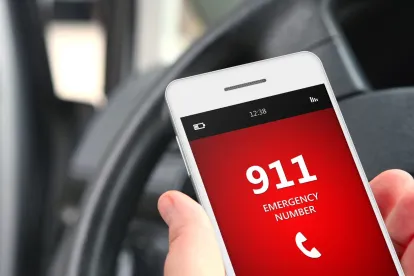Last week, the Federal Communications Commission (FCC or Commission) released a draft Notice of Proposed Rulemaking (NPRM) to help facilitate the nationwide transition to Next Generation 911 (NG911). The Commission will vote on this NPRM at its Open Meeting on June 8th.
Background
In October 2021, the National Association of State 911 Administrators (NASNA) filed a Petition for Rulemaking; Alternatively, Petition for Notice of Inquiry (NASNA Petition) with the FCC asking the Commission to take a more active role in regulating NG911 deployments throughout the country.
In particular, the NASNA Petition asked the Commission to update its rules to:
- Establish authority over origination service providers’ delivery of 911 services through IP-based emergency services networks (ESInets);
- Amend its rules to advance the transition to – and implementation of – NG911 services; and,
- Require OSPs to bear the cost of delivering NG911 calls unless the state has an alternative cost-recovery mechanism.
We summarized the NASNA Petition in greater detail in a previous blog post.
The FCC’s Draft NPRM
At a high level, the FCC’s draft NPRM addresses the concerns raised in the NASNA Petition and proposes to do three things:
- Require wireline, interconnected VoIP, and Internet-based Telecommunications Relay Services (TRS) providers to complete all translation and routing to deliver 911 calls, including associated location information, in the requested IP-based format to an Emergency Services IP network (ESInet) or other designated point(s) that allow emergency calls to be answered upon request of 911 authorities who have certified the capability to accept IP-based 911 communications;
- Require wireline, interconnected VoIP, CMRS, and Internet-based TRS providers (Originating Service Providers or OSPs) to transmit all 911 calls to destination point(s) in those networks designated by a 911 authority, including to a public safety answering point (PSAP), designated statewide default answering point, local emergency authority, ESInet, or other point(s) designated by 911 authorities that allow emergency calls to be answered, upon request of 911 authorities who have certified the capability to accept IP-based 911 communications; and,
- Require OSPs to cover the costs of transmitting 911 calls to the point(s) designated by a 911 authority, including any costs associated with completing the translation and routing necessary to deliver such calls and associated location information to the designated destination point(s) in the requested IP-based format.
If ultimately enacted, these rule changes would significantly alter the landscape of NG911 deployments around the country. How? I’m glad you asked!
Real World Implications
Disputes between Originating Service Providers, niche 911 service providers, and 911 authorities are on the rise, which introduces unexpected costs and delays for 911 authorities. A common point of contention between the OSPs and 911 service providers involves interconnection: where are OSPs required to interconnect to a 911 provider, and does the OSP or 911 provider foot the bill for connecting the two networks?
The FCC addressed this cost allocation issue in the limited context of wireless deployments in 2001. The FCC’s Public Safety and Homeland Security Bureau’s King County Letter – and the agency’s Order on Reconsideration –require wireless carriers to deliver their 911 traffic, at their own expense, along with associated information directly to the selective router. But the King County Letter was viewed as having limited applicability to wireless carriers only and did not resolve the issue for other OSPs. This has continued to create issues for NG911 deployments.
For example, in October 2017, the South Dakota 911 Coordination Board filed a Petition for Declaratory Ruling with the state PUC to determine the responsibility of rural carriers to interconnect with a new NG911 network that contemplated two meeting points within the state. The South Dakota PUC was asked to determine whether the Covered 911 Service Provider or the individual rural LECs were required to transport traffic between the service territories of the rural carriers and the two centralized points of interconnection on the NG911 network.
The proceeding was contentious, which added unanticipated costs and delays to the NG911 project. The FCC’s proposed rules – if ultimately enacted – would provide clarity and hopefully reduce costs and project timelines to promote efficient NG911 deployments.
Conclusion
In our previous blog post on this topic, we compared the FCC’s rulemaking process to a marathon and noted that the NASNA Petition was merely the starting line. Sticking with that analogy, the Commission’s NPRM is significant progress towards adopting new rules (let’s say we’re at the 10-mile mark of a 26-mile journey). If the NPRM is adopted in June, the FCC likely will be seeking comment on the proposed rules in the 3rd Quarter and then may be in a position to issue final rules in 2024.





 />i
/>i


